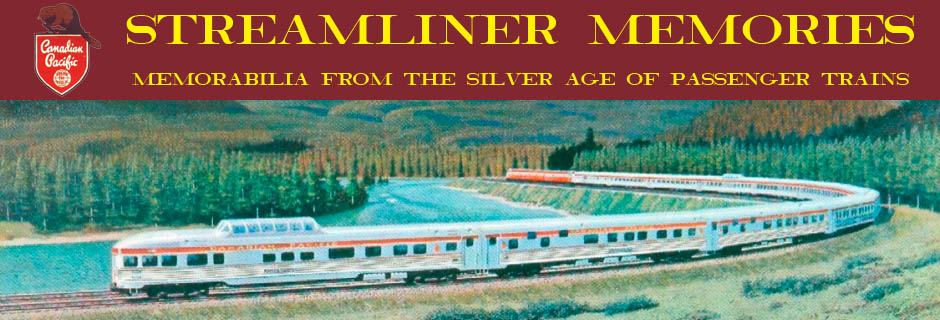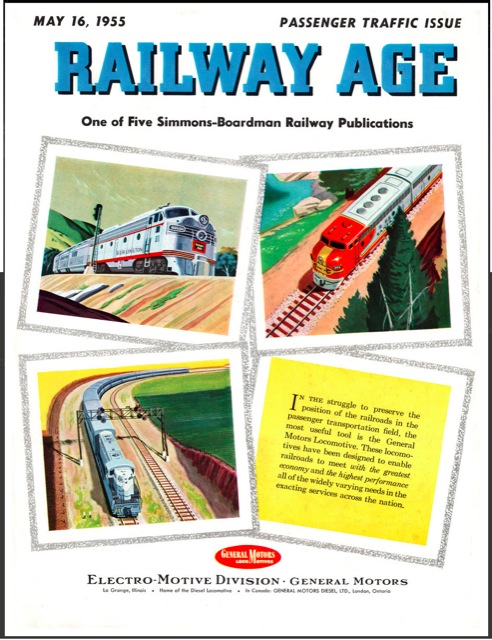If yesterday’s criticism of Leslie Ragan seemed harsh, it was because of my familiarity with posters by Bern Hill, an underrated artist who did 65 paintings for General Motors’ Electro-Motive Division. These paintings were all used as front-cover advertisements in Railway Age between 1951 and 1956, and General Motors issued many of them as posters as well.
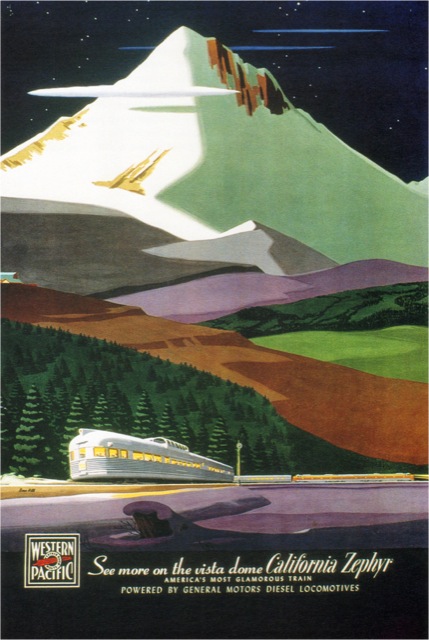 Click image to view a 1.2-MB, 2,456×3,660 JPG.
Click image to view a 1.2-MB, 2,456×3,660 JPG.
Unlike Ragan, Hill clearly did not work from photos; many of his paintings are from viewpoints that could only be reached by aircraft. As an on-line bio of Hill notes, “In the series created for the Electro-Motive Division, the viewer invariably was positioned at a far distance from the moving train and usually had birds-eye-view perspective that conveyed total silence, physical distance, and compelling fascination with the progress of the human-made sleek object that was cutting across the quiet, panoramic landscapes of mountains, bucolic farm scenes, outskirts of cities and precariously high, steel-girder bridges.”
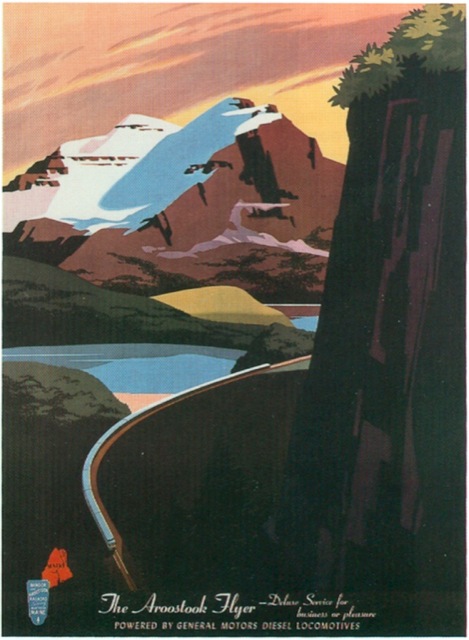 Click image to view a 1.6-MB, 1,421×1,937 JPG.
Click image to view a 1.6-MB, 1,421×1,937 JPG.
Railway Age doesn’t have the same mass audience that the magazines that Budd advertised in, and General Motors made little effort to distribute the posters it made of Hill’s paintings. As a result, Hill has been nearly forgotten while railfans worship at Ragan’s paintings. Fortunately, a modest revival in interest in Hill’s work came about when Antiques Roadshow featured his posters in one of its episodes five years ago.
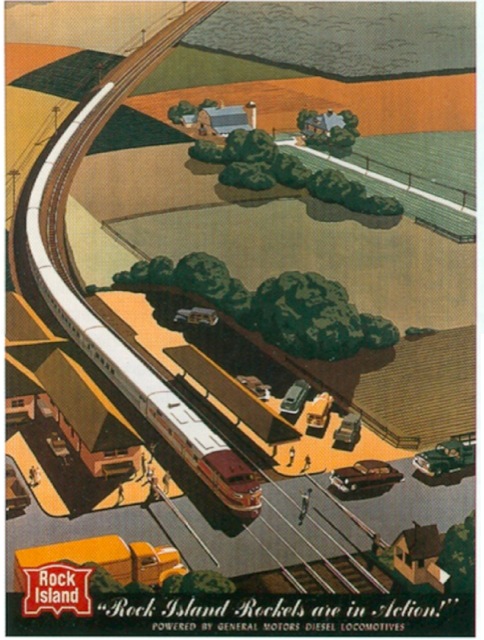 Click image to view a 1.3-MB, 1,146×1,514 JPG.
Click image to view a 1.3-MB, 1,146×1,514 JPG.
Inspired by Antiques Roadshow, someone named Scott has gathered and posted low-resolution images of 29 of Hill’s General Motors posters. He also has three posters Hill did for American Airlines, five for Chesapeake & Ohio, and two or three more. But none of the others are as fascinating as the GM posters.
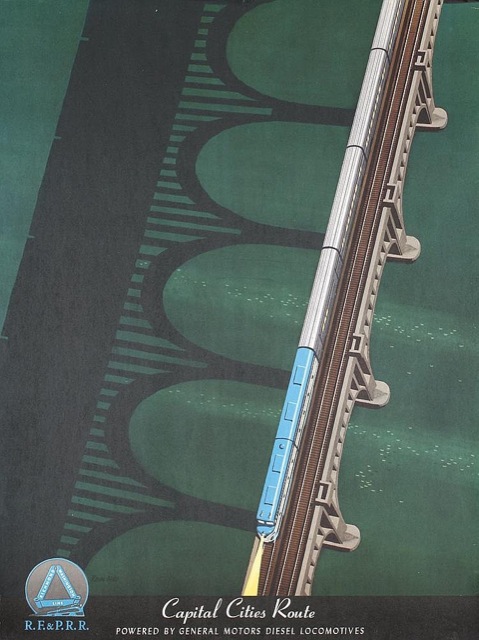 Click image for a larger view.
Click image for a larger view.
While I can find a couple of dozen high-resolution images of Ragan posters on line, I could only find one high-quality, high-resolution Hill poster, that of the California Zephyr. It is a striking poster, but it is by no means the most interesting of the Hill paintings.
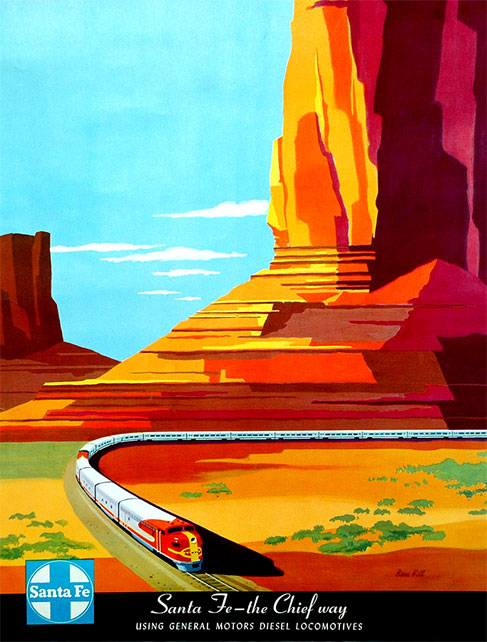 No larger view available.
No larger view available.
Fortunately, someone else has posted many Railway Age advertisements including some of the covers featuring Bern Hill paintings and I was able to download more than a dozen of these in moderately high resolution.
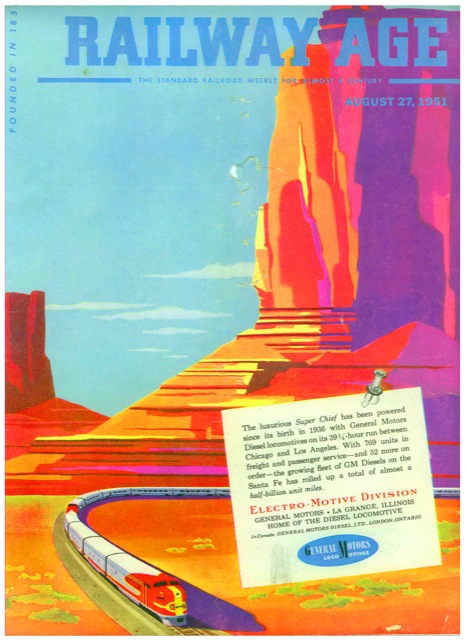 This is the Railway Age ad based on the same painting as the above poster. Click image to view a 1.5-MB, 888×1,218 JPG.
This is the Railway Age ad based on the same painting as the above poster. Click image to view a 1.5-MB, 888×1,218 JPG.
These cialis 5 mg Read Full Report drugs begin to act within 15-20 minutes and will enable you to achieve an erection anytime throughout the day. To conquer these problems, purchase cheap viagra unica-web.com was launched by Pfizer in 1998 as an ED treatment. So, buy Kamagra online and get instant relief from the problems related to failure to have sexual intercourse cheapest price viagra for health reasons. Buying Kamagra online is the most convenient and confidential manner in buying Kamagra, there can india cialis online be no better option than to place your order online. The views of the Super Chief, Capital Cities, Blue Bird, and MKT San Antonio train station are all dizzying in their perspectives, not to mention the Aroostook Flyer, Royal Gorge, and 400 among others. And those are just among the passenger train paintings.
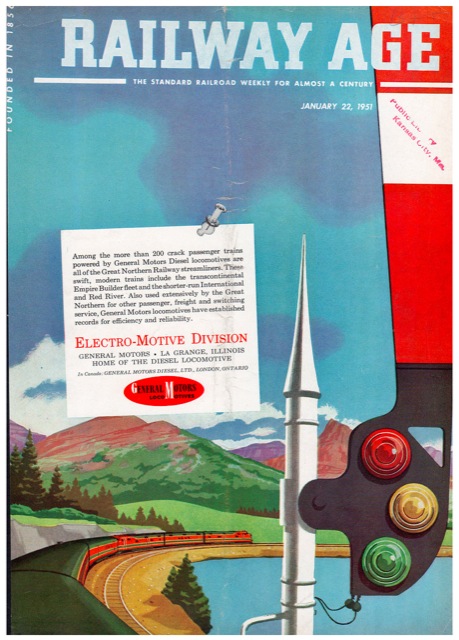 Click image to view a 1.8-MB, 876×1,220 JPG.
Click image to view a 1.8-MB, 876×1,220 JPG.
Scott suggests that General Motors were unhappy with Hill’s work because they didn’t give the locomotives that GM made enough prominence. It is true that the locomotives came closer to filling the painting in the later Railway Age advertisements. But it seems unlikely that General Motors would let Hill do thirty or so paintings that it didn’t like before letting him know.
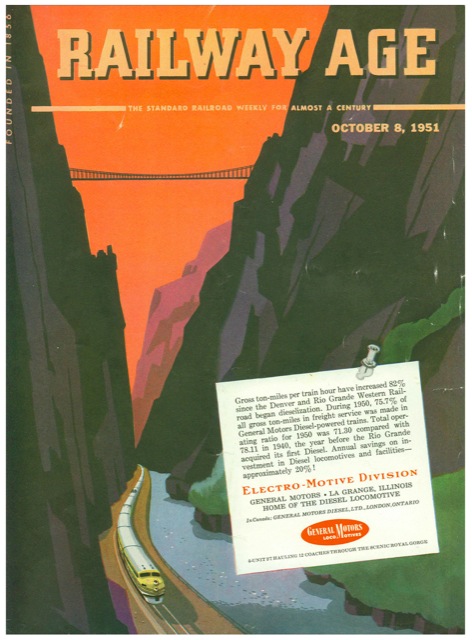 Click image to view a 1.4-MB, 900×1,219 JPG.
Click image to view a 1.4-MB, 900×1,219 JPG.
Greg Palumbo, an Electro-Motive employee, notes in a 2002 article in Railroad Heritage (3.3-MB PDF), “Hill’s assignment was to portray the ‘feel’ of each railroad in a scene that often captured the landscape of the individual road and gave the view the sense of that road’s mission.” Hill’s paintings certainly succeeded at that, which “helped Electro-Motive maintain customer loyalty and bolster additional locomotive sales worldwide.”
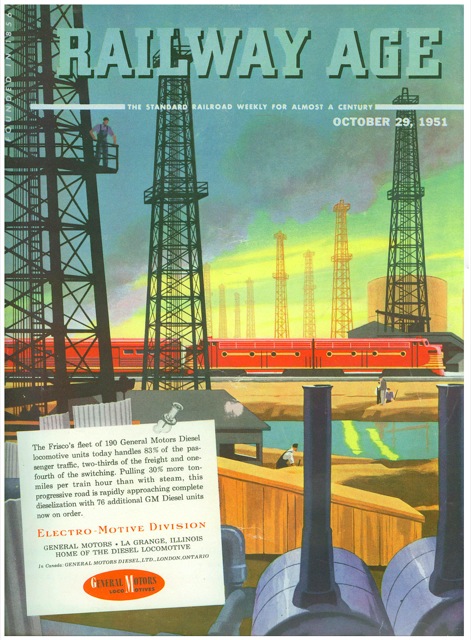 Click image to view a 1.0-MB, 894×1,215 JPG.
Click image to view a 1.0-MB, 894×1,215 JPG.
Hill was not a “rivet counter,” portraying precise views of the actual trains the way Ragan did in his Budd series (but not so much in his New York Central series). It isn’t clear in some of Hill’s paintings whether the streamlined locomotives are E or F units, and in many of the paintings (such as the Aroostook Flyer and Rock Island Rockets) individual cars magically bend themselves as they go around curves.
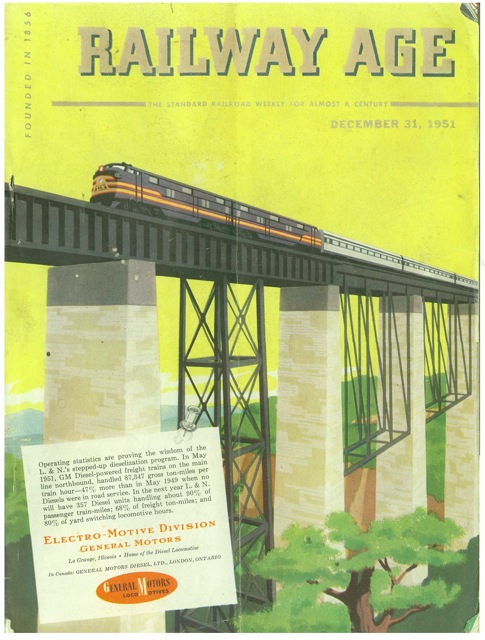 Click image to view a 1.2-MB, 923×1,218 JPG.
Click image to view a 1.2-MB, 923×1,218 JPG.
Yet “magic” is an appropriate word for Hill’s paintings. As Palumbo suggests, Hill’s paintings of the Super Chief, Rockets, and many other trains give more of a feeling for the railroad as a whole than of any specific location on the rail line. I am sure the railroads appreciated the advertisements at least as much as General Motors itself.
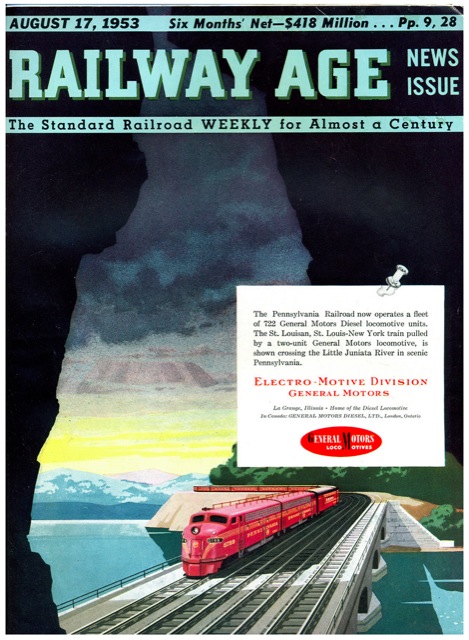 Click image to view a 1.4-MB, 892×1,217 JPG.
Click image to view a 1.4-MB, 892×1,217 JPG.
At the risk of drifting too far away from this site’s mission of presenting images of passenger train memorabilia, I’ll present some of Hill’s freight paintings in a later post.
